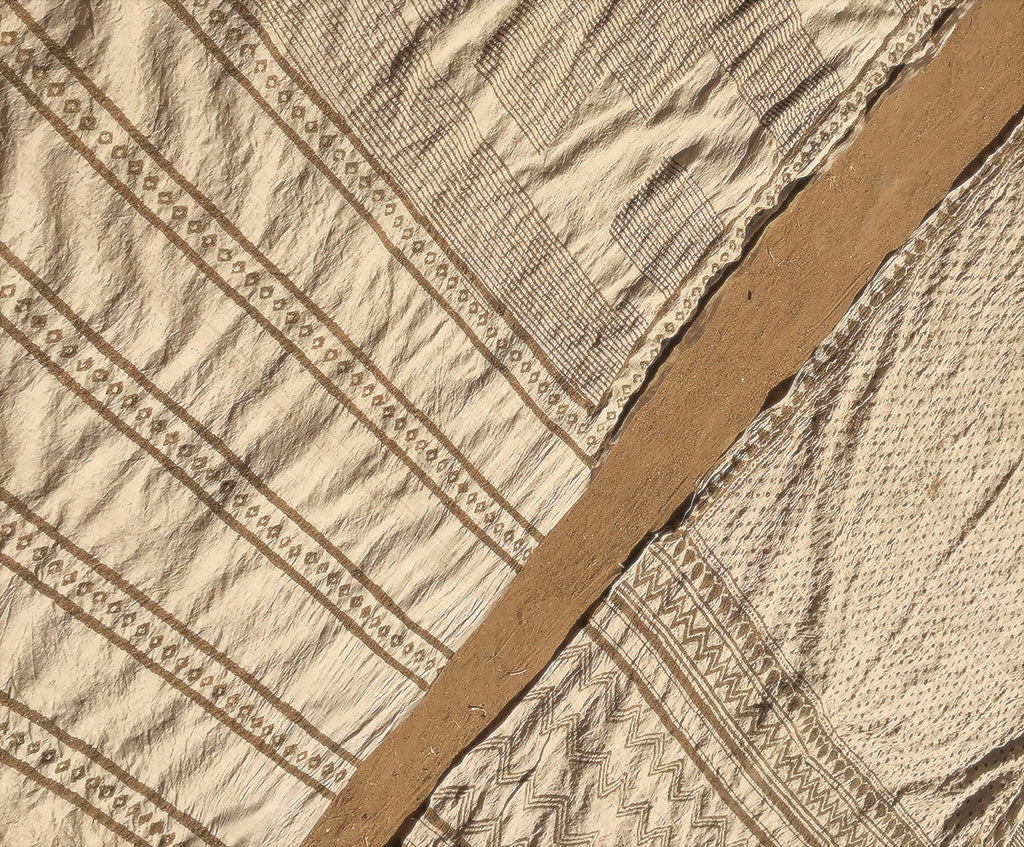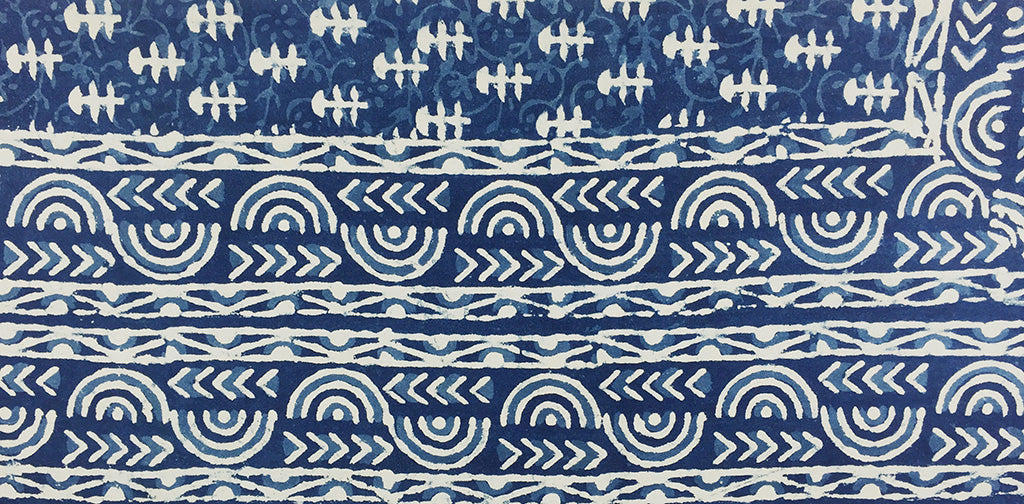Block Print - Adding Colour

Vivid color, exotic history, a deep spiritual connection to Mother Earth and wonderful celebration of fabric design - without limits on imagination, are all part of the special magic of India!
Adding Colour to the Fabric

Continuing our block printing journey brought us to dusty workspaces in Bagru and Sanganer, the original home of block printing, where we witnessed the washing of cotton fabrics to prepare them for printing. Mordant treatments were sometimes used to further prepare the fabric to take the natural dye, and fabrics were allowed to dry in the hot Indian sun.

With the block print design decided each color making up the pattern was applied with the blocks in turn and allowed to dry. In this example the dark background color was applied first, then the internal detailed design followed by the gold overlay.
After seeing these artisans at work you really appreciate the skill involved in confidently placing the blocks in the correct position by eye only. They work at quite a speedy pace, with the block re-inked between each placement and a sharp, rythmic tap on top to ensure a good contact with the cotton fibres.

An edge design was placed on a wide fabric destined to be a bedspread or cover. Getting the border design to blend smoothly around the corners really reflected the skills of the printers! The area inside the borders will have a number of different designs and colours, using a variety of blocks. Large blocks were used in many designs - here we can see a progression of the first and second color.


The ink is kept in containers with a porous cover resting on top to help apply a consistent amount of ink to the block and keep it from drying out. The containers are wheeled alongside as the printers work the lengths of fabric. Lakshmi testing her printing skills on a small sample fabric at the Anokhi Museum in Jaipur...

Now comes time for more color, in this instance it's indigo, but many natural dyes can be used to complete the designs. In indigo resist dyeing, the fabric is printed with a mud mixture or 'dabu' and left to dry, after which the fabric is then dyed in large indigo vats. The areas with the resist do not absorb the indigo dye and the original fabric color remains as part of the block printed design - especially effective for creating magnificent scarves. This process can be repeated several times between dyeing resulting in spectacular multi color designs.

These lovingly tendered indigo vats in Rajasthan are very deep - around 5 metres (17 feet) and require constant care and attention to keep the indigo dye ‘alive’ and healthy, i.e. at the right temperature and consistency. The deep vat requires cleaning out around every six months to remove accumulation of dirt and sand, before a new batch is commenced.


Fabric printing methods used for centuries are very much alive, especially in Rajasthan and it’s such a delight for us to witness this creative work. Produced slowly, patiently and in harmony with the natural lifestyle that still exists in special places, it is very reassuring!
See more on Block Printing at BLOCK PRINTING -THE BLOCK and BLOCK PRINTING - FINISHING

